|
Information about Zante / Zakynthos |
|
|
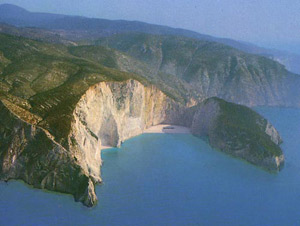 Contents Contents
Introduction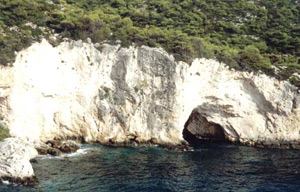 Zakynthos is the sixth of the Ionian islands, west of the Coast
of Ilias. The other Ionian Islands are Corfu, Paxos, Lefkas, Ithaka
and Kefallonia. Homer refers to Zakynthos in The Odyssey
as 'woody Zakynthos'. South east of the island lies the Pit of Inoussae,
which is the deepest part of the Mediterranean sea at 5090 metres.
Due to the geology of the region, a series of earthquakes formed
the island, with its steep cliffs and many smaller islands around
Zakynthos itself. This area of the Ionian sea has (and still is)
an area of seismic activity. On August 9th 1953 a devastating earthquake
hit the island, destroying seventy percent of the buildings on the
island. Zakynthos Town, previously known as 'The Venice of the South'
was ravaged by a fire that spread from the taverna kitchens.
Zakynthos is the sixth of the Ionian islands, west of the Coast
of Ilias. The other Ionian Islands are Corfu, Paxos, Lefkas, Ithaka
and Kefallonia. Homer refers to Zakynthos in The Odyssey
as 'woody Zakynthos'. South east of the island lies the Pit of Inoussae,
which is the deepest part of the Mediterranean sea at 5090 metres.
Due to the geology of the region, a series of earthquakes formed
the island, with its steep cliffs and many smaller islands around
Zakynthos itself. This area of the Ionian sea has (and still is)
an area of seismic activity. On August 9th 1953 a devastating earthquake
hit the island, destroying seventy percent of the buildings on the
island. Zakynthos Town, previously known as 'The Venice of the South'
was ravaged by a fire that spread from the taverna kitchens.
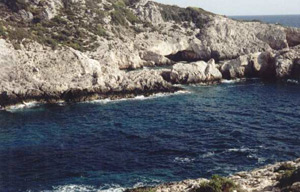
History
RomanIn 150 BC, general Fulvius vanquished the Aetolians and successfully reconquered Zakynthos for Rome. During the early Christian years, piracy in the Ionian brought a number of invasions to the island and after several hundred years of Roman rule the island gained independent governance with the caveat that taxes were paid to Rome. Zakynthos gained cultural respectability in the region and was a regular host to Roman scholars and intellectuals.
ByzantineFollowing the decline and fall of the Roman Empire, the region succumbed to the insatiable greed of pirates. In the decades that followed, Vandals, Huns, Goths and Barbary corsairs would plunder the Ionian islands and the western Mediterranean in general. Constantine the Great founded the Byzantine empire and Zakynthos became part of the province of Illyria. Under the patronage of Constantinople, Zakynthos became less vulnerable to the invading forces of the region and enjoyed a period of cultural and economic regeneration. During this period, it is believed that Christianity came to the island. Mary Magdalene allegedly visited the island in 34AD via Jerusalem to Rome where she is believed to have imparted the teachings of Christ. In 466AD, Zakynthos once again fell to destructive invaders. The African Vandal king Gizarich blockaded the island with sixty ships, plundered the island and razed Zakynthos Town to the ground.
Crusaders and OverlordsAs the Byzantine empire was fading from prominence, Crusader armies invaded in search of converts and the rich booties which lay to the East. In the period between 1147 and 1479, the island was ruled by aristocratic overlords who would eventually cede the island to the expansionist Venetians in 1485. Many legacies of this period (predominantly from an architectural point of view) remain to the present day.
Venetians
After the Cretan War in 1669, the Republic of Venice was in decline and lost its overseas territories one by one. The ruling classes on the island felt threatened by the spread of eighteenth century liberal ideas and in a desperate attempt to usurp this social revolution, murdered the Jacobins, the primary political group on the island.
This was to be the last bloody stand for the Venetians who surrendered
the town and the island to the French in 1797.
French Republic and the Russo-Turkish OccupationUnder the French, Zakynthos became the regional council for the Prefecture of the Aegean and during the next fifteen months began a period reconstruction before the Russo-Turkish fleet forced the French to leave the island. In 1800, Russia and Turkey signed a treaty in Constantinople which founded the Eptanissos State of the Ionian Islands. This would be a self-governing part of the Russian Empire whose constitution declared that local government be drawn from hereditary nobles. The people of Zakynthos, haunted by the legacy of previous nobles, revolted and raised a Union Flag on the Zakynthos Town fortress in the hope of attracting British forces to defend their independence. It would be another nine years of instability before the British would finally impact upon the island's independence.
English RuleThe early period of British rule brought a series of improvements to the quality of life on the island. During this period, Zakynthos was still viewed as a territorial prize and was a British protectorate. Once again, foreign rule, this time under the administration of Thomas Maitland, the British High Commissioner, was cruel and unjust. When the Greek revolution was declared, the people of Zakynthos found fresh impetus to fight on the side of the Greeks. In 1864, recognising Free Greece, England abandoned her status as protector and the Greek flag was raised in Zakynthos Town.
Geography
Three
tectonic plates plates meet in the region of Zante, Kefalonia
and Ithaki. These plates are in constant, minute motion (called
"subjunction") and cause tension between the plates
leading to seismic tremors
|
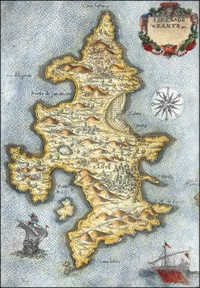 During
the early years of Venetian rule, Zakynthos enjoyed a new period
of growth, both in terms of population and economic activity.
During
the early years of Venetian rule, Zakynthos enjoyed a new period
of growth, both in terms of population and economic activity.
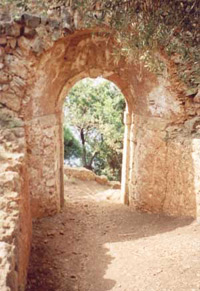
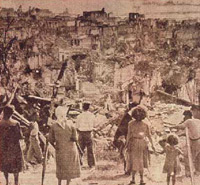 Zakynthos
is 406 square kilometres in area and has 123 kilometres of shoreline.
The island is triangular in shape and can be divided into three
distinct regions. To the north west, barren mountains rise from
the jagged shoreline. The central region of the island is fertile
due to the benefits of good irrigation and numerous underground
springs. In this region, limestone rock strata and clay beds dominate
the geology and natural sulphur and bitumen springs. To the east
and the south are the beautiful bays and abundant beaches.
Zakynthos
is 406 square kilometres in area and has 123 kilometres of shoreline.
The island is triangular in shape and can be divided into three
distinct regions. To the north west, barren mountains rise from
the jagged shoreline. The central region of the island is fertile
due to the benefits of good irrigation and numerous underground
springs. In this region, limestone rock strata and clay beds dominate
the geology and natural sulphur and bitumen springs. To the east
and the south are the beautiful bays and abundant beaches. 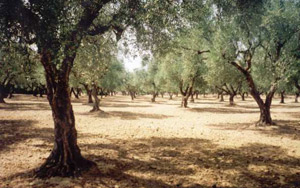 In
spite of the advent of tourism on Zakynthos, the agricultural
legacy of this fertile island is a predominant source of income
for the islanders. Today, the main crops are raisins, olives,
vines and citrus fruits. There are many small fishing ports around
the island which supply the increased demand for seafood during
the summer tourist season.
In
spite of the advent of tourism on Zakynthos, the agricultural
legacy of this fertile island is a predominant source of income
for the islanders. Today, the main crops are raisins, olives,
vines and citrus fruits. There are many small fishing ports around
the island which supply the increased demand for seafood during
the summer tourist season.
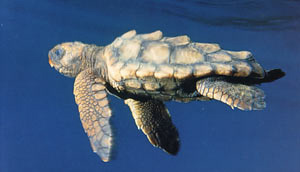 One
of the highlights of a visit to Zakynthos is sighting the beautiful
loggerhead sea turtle (Caretta caretta). The turtle is an endangered
species and can be found both on Zakynthos and Kefalonia.
One
of the highlights of a visit to Zakynthos is sighting the beautiful
loggerhead sea turtle (Caretta caretta). The turtle is an endangered
species and can be found both on Zakynthos and Kefalonia. 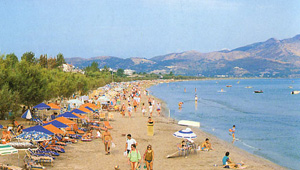 Although
not quite at the mercy of mass tourism, Zakynthos has seen a number
of rapid developments along the eastern and southern coasts over
the last ten years.
Although
not quite at the mercy of mass tourism, Zakynthos has seen a number
of rapid developments along the eastern and southern coasts over
the last ten years.